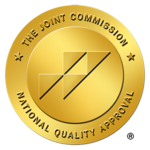Home / What We Treat /
Home / What We Treat / Kratom Addiction Treatment in St. Louis
Kratom, or Mitragyna speciosa, has been a staple in traditional medicine in Southeast Asia for hundreds of years. Though it’s legal on the federal level and has become a popular herbal remedy in the U.S. for its opioid- and stimulant-like effects, kratom can have serious risks – including addiction.
What Is Kratom?
Kratom (Mitragyna speciosa) is a tropical tree native to Southeast Asia. It belongs to the coffee family and has been used in Asian countries for traditional medicine, particularly for its stimulant and opioid properties.[1] It’s grown in Thailand, Myanmar, Malaysia, and other parts of Southeast Asia. It has been used as a stimulant to help laborers overcome muscle pain and exhaustion.
The active compound in kratom is mitragynine, which can produce effects similar to morphine or heroin.[2] It’s sometimes viewed as a safer alternative to highly addictive opioid painkillers, but it’s not without risks on its own.
The phytochemicals in kratom can have different therapeutic effects and toxicological properties. Mitragynine and 7-hydroxymitragynine, which are exclusive to the plant, are responsible for the effects of kratom.[3] Kratom may be used in many ways, including as a liquid, tablet, capsule, or loose leaves that may be chewed or brewed into tea. At low doses, kratom acts as a stimulant, but higher doses bring euphoria and pain relief.
Kratom Addiction and Abuse
Kratom has been viewed as a safe alternative to opioid painkillers, but kratom abuse and addiction have become more of a concern. Its uses have extended beyond remedies to recreational drug use, with people seeking out the drug to get high.
The active compounds in kratom interact with opioid receptors in the brain, causing feelings of euphoria and relieving pain. This is similar to the effects of opioids. Continued kratom use can lead to physical dependence and withdrawal that’s similar to opioid withdrawal, including muscle aches, irritability, insomnia, and intense cravings.
Without treatment, kratom dependence can develop into an addiction or substance use disorder. With prolonged use, especially at high doses, kratom can have serious side effects like psychosis, constipation, and liver damage.[4] Kratom addiction can have similar negative effects to other drugs of abuse, such as strained interpersonal relationships, depression, anxiety, and problems in life.

Kratom Risks and Side Effects
Kratom is often used as a remedy for pain, fatigue, or anxiety, but the substance isn’t regulated. It’s difficult to predict its effects without knowing its potency or the concentration of active ingredients, leading to some unpredictable effects and risks like:[5]
Though rare, kratom use can lead to coma and death. Without regulation, it’s difficult for researchers to determine the toxic dose of kratom. There have been cases of fatal overdoses, but they typically involve multiple substances or contaminated kratom products rather than a toxic dose of the substance itself.
Can You Get Addicted to Kratom?
Yes, kratom can be addictive. Though it’s not classified as a controlled substance by the Drug Enforcement Administration (DEA), its active compounds interact with the opioid receptors in the brain and produce reinforcing effects. Regular use of kratom can cause physical dependence, meaning the body gets used to the presence of the substance and needs it to function normally. Once this occurs, intense withdrawal symptoms like cravings, muscle pain, nausea, and insomnia make it difficult to quit.
Kratom Withdrawal
Kratom withdrawal symptoms can vary based on the dose, use habits, and other factors. However, there are some common symptoms:[6]

Kratom Addiction Treatment in St. Louis
Kratom’s complex effects on the brain and body can make it difficult to overcome addiction. At Engage Wellness, we take a comprehensive approach to kratom addiction treatment to address the physical, emotional, and psychological factors that contribute to it.
Depending on the severity of withdrawal, treatment may begin with detox placement to coordinate a medically supervised detox. Kratom withdrawal can be intense and uncomfortable, which increases the risk of relapse. Medical detox offers support and supervision to ensure you have a strong foundation for recovery.
Once detox is complete, the next step is a full treatment program for substance abuse. Depending on your needs, this may include an intensive outpatient program (IOP) for kratom addiction, which provides structured therapy several times a week without requiring a residential stay. Outpatient treatment is also available if you need a more flexible schedule while balancing your daily responsibilities.
Both IOP and outpatient treatment use a range of evidence-based therapies tailored to your needs and goals, including:
01
Focuses on healing family dynamics by addressing past wounds, improving communication, and building a strong support system for recovery.
02
Provides a supportive environment where peers share experiences, offer encouragement, and create a sense of accountability and community.
03
Based on the principles of Alcoholics Anonymous (AA) and Narcotics Anonymous (NA), 12-Step programs encourage self-reflection, personal responsibility, and mutual support.
04
Helps identify and change harmful thought patterns and behaviors that fuel substance use, replacing them with healthier coping strategies.
05
Combined CBT techniques with mindfulness and emotional regulation to better manage cravings and impulsive behaviors.
06
Strengthens internal motivation for recovery by helping individuals resolve ambivalence about quitting kratom.
07
A specialized therapy designed to help process past trauma that may contribute to substance use.
08
Teaches skills to recognize triggers, manage high-risk situations, and maintain long-term sobriety.
09
Focuses on treating the whole person with complementary therapies like meditation, mindfulness, acupuncture, and yoga to support emotional and physical healing.
10
Specifically designed to address the unique challenges veterans face, including trauma, substance use, and post-traumatic stress disorder (PTSD) during their transition back to civilian life.



